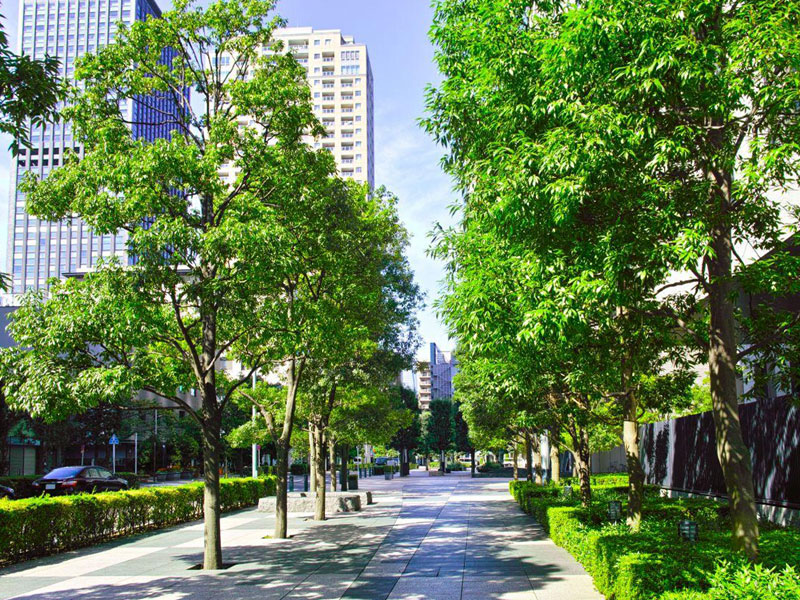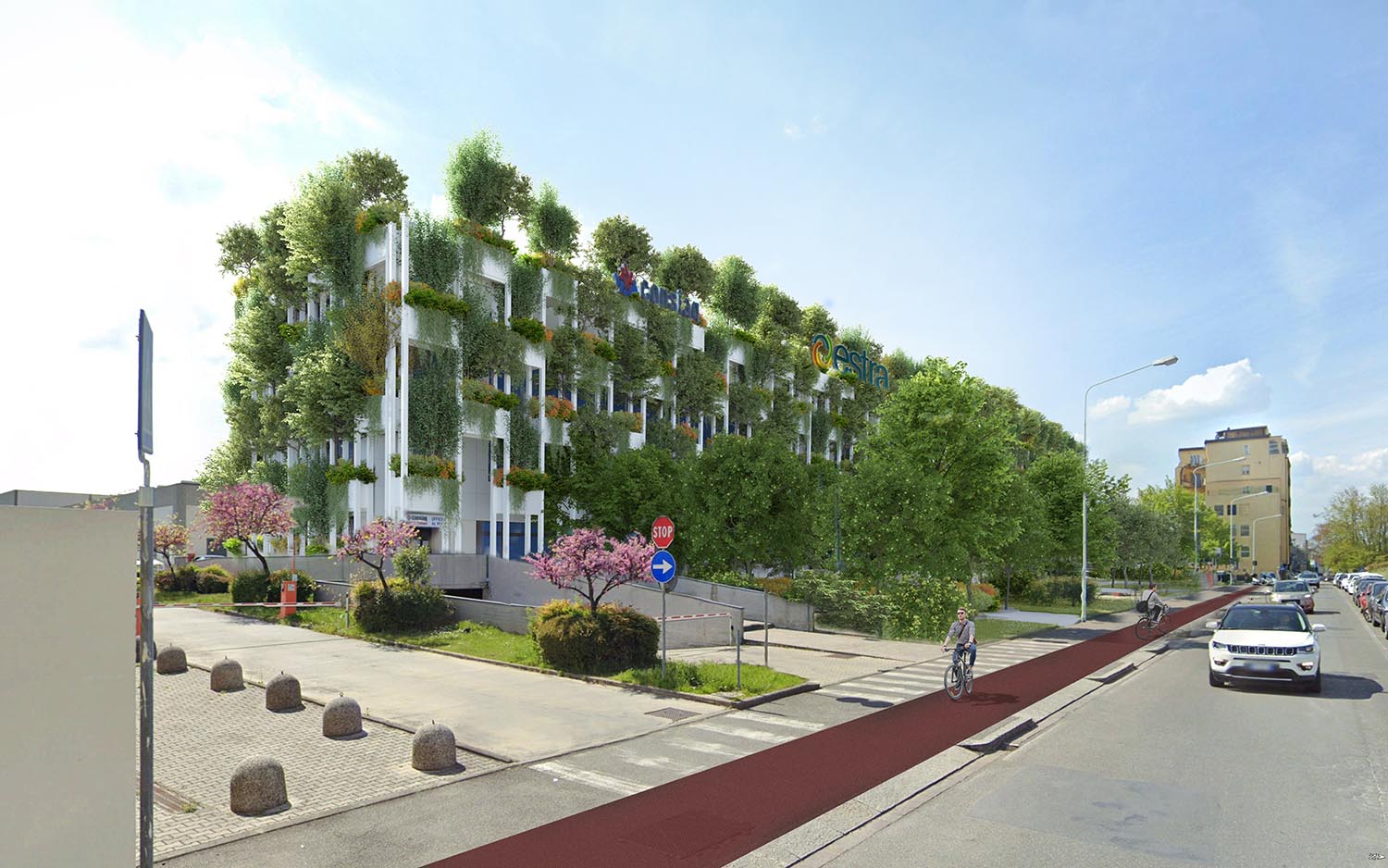Reforest cities
Reforestation projects in metropolitan cities are encouraged by Legislative Decree 111/2019, "Climate Decree"

Reforest cities. Financing coming with the “Climate Decree”.
The reforestation projects of metropolitan cities are encouraged by Legislative Decree 111/2019, “Climate Decree”. The Ministry of the Environment has approved the rules for financing reforestation projects in metropolitan cities – deadline 11/3/2021.
The theme of the pandemic and the perceived lack of oxygen, experienced by COVID-19 patients, increasingly focuses on the role that, within cities, can be played by plants and the possibility of re-evaluating natural heritage, overcoming the dichotomy between city and agricultural spaces.
Urban forestry projects are particularly urgent to operate in the wake of the positive contribution to climate change, bringing well-being to the inhabitants and progressively reducing land consumption. The creation of tree-lined spaces is necessary to revive cities and generate the virtuous process of governing green areas that generates employment and refreshes citizens, favoring the shared management of spaces such as urban gardens, shared management gardens, etc.
The reforestation projects of metropolitan cities are, among other things, encouraged by the Legislative Decree 111/2019, “Climate Decree” for which the Ministry of the Environment approved the rules to finance reforestation projects in metropolitan cities, with expiry date 11/3/2021. The possibility of creating urban and peri-urban forests is strongly encouraged by the government measure for tree planting, replanting and forestry projects, with interventions that can be financed for costs up to 500,000 euros. This is an interesting challenge, which can and must field a plurality of skills, from those of the geologist to those of the agronomist, the landscape architect, the naturalist, the biologist, the economist, etc. Designing new spaces through plants means having a look towards the future, the evolution of green spaces, their management over time, the cost-effectiveness of the product to be evaluated over long periods of time, because you really think about the lasting well-being of the transformations generated. in the territory.
To stem the harmful effects of land consumption in our country, the opportunity to implement reforestation, offered by the climate decree, is extremely necessary, considering that the strategic objectives to be pursued revolve around three principles: protecting biodiversity, increase the surface of green infrastructures, improve the health and well-being of citizens.
The functionality of ecosystems, which is supported by the coexistence of different plant species, generates a balance through the relationships that are generated between plants and the rest of the natural system, in which microorganisms and the animal world are present. The data published by the Ispra yearbook (Higher Institute for Environmental Protection and Research) show that there was a further land consumption between 2017 and 2018, equal to a transformation of about 2 square meters per second, which caused a loss of 23,000 sq km of surface. This is an almost irreversible damage, since the concrete, the asphalt, the massive waterproofing of important parts of the territory, do not allow rapid returns to the previous state and, instead, increase the soil degradation process.
On the contrary, trees perform an extraordinary action in safeguarding the climate, because they are capable of transforming atmospheric carbon and help to contain the heat from urban spaces, favoring energy savings for the use of air conditioners.
The air, purified by the action of the vegetation, brings benefits against atmospheric pollution, generates positive effects on the well-being of citizens, with the powerful contribution of the foliage and the root system, carries out an action to contain the erosion of the soil and disastrous effects of landslides and floods.
Among the examples of urban reforestation, the municipality of Prato is of particular interest, which was used to revive the manufacturing heritage, thanks to the program conceived by the architect Stefano Boeri and the scientist Stefano Mancuso. Mancuso’s idea, according to which “redevelopment with plants is the most effective tool for improving environmental and social quality”, was supported by the Action Plan for Urban Forestry in Prato, which aimed at the goal of create a “huge urban jungle” in which there is at least one tree for each inhabitant of the city.
Plants are the only source of oxygen, an essential element in order to survive. Plants also have an indispensable function, that is to purify and improve air quality, the most current challenge to literally restore oxygen to our asphyxiated cities in which it is possible to functionally integrate plants in areas with high building density. Plants, from a simple ornament or aesthetic function, allow you to purify and improve the quality of the air, creating urban gardens, allowing energy savings and the creation of common spaces for socializing, such as urban gardens.

©Stefano-Boeri-Architects
The Urban Jungle in Prato is an example of urban regeneration, with hydroponic greenhouses and green facades, for a lot of popular residential buildings and the new covered market with a large “air factory” inside, a 250-meter greenhouse squares with the function of purifying the air of the restaurant that is located in the internal area. The Urban Jungle is a project that aims to generate oxygen and well-being for visitors, but is capable of generating work with the management of the production activities envisaged therein. The project, which will be completed in 2021, aims to reduce air pollution, promoting outdoor activities, increasing biodiversity in the area, regenerating the soil making it permeable, while the greenhouse guarantees the supply of zero kilometer food.
Plants perform an extraordinarily important function because they are able to absorb air from the rooms, channel it and filter it through the ground, transforming pollution into biomass, representing a circular economy that returns clean air and well-being.
Could we ever live without vegetation? Is there any machine, some other potential mechanical substitute for plants to be able to generate the oxygen that is necessary and indispensable for us to live?
There are also many tests carried out in the field of social psychology, which prove how much well-being is produced in communities that live surrounded by greenery.
The positive aspects of plants within cities is also that of being able to restore dignity to residual, peripheral spaces, or to the classic “non-places”, those dystopian spaces such as airports, shopping centers, offices. These spaces regain hospitality capacity, carrying out aggregative and social functions, when green spaces are organized in them that integrate the buildings.
Author: Francesca Ferraro architect



































































